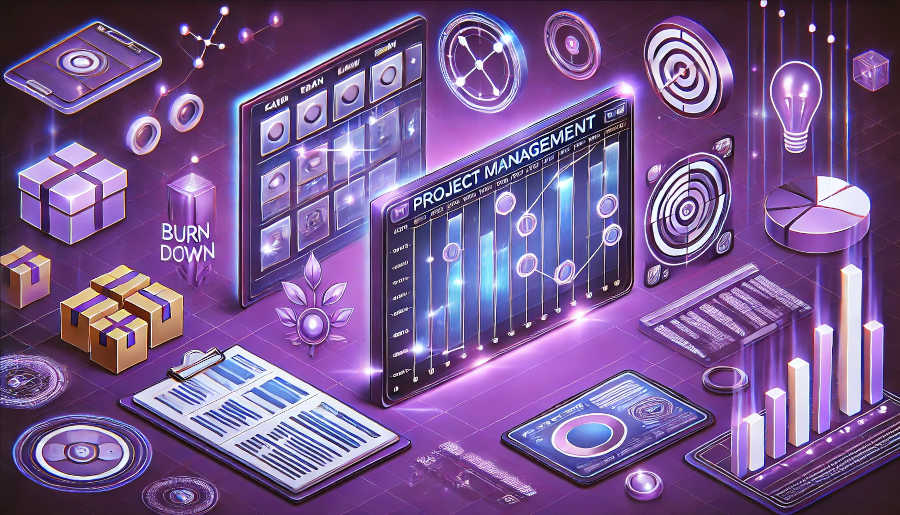Concept Stage
The concept stage is the starting point of an IPD project. It is here that the initial ideas for a product are generated and explored. This involves market research to identify unmet needs, technological trends, and competitive landscapes. Teams need to analyze various factors such as customer requirements, potential market size, and the feasibility of different product concepts. For example, a tech company might notice a growing demand for more portable and energy-efficient devices. Through in-depth market surveys and interviews, they can gather insights into what features customers value most. This stage also requires cross-functional collaboration, as marketing, engineering, and other departments come together to brainstorm and evaluate different product concepts. The goal is to narrow down the options to a few viable concepts that have the potential to succeed in the market.
Once potential concepts are identified, a detailed business case needs to be developed. This includes estimating the costs involved in product development, production, and marketing. Revenue projections based on market analysis are also crucial. For instance, calculating the expected sales volume and price points for the new product. Additionally, risks associated with each concept must be identified and analyzed. These risks could range from technological uncertainties to regulatory challenges. By thoroughly assessing the business case, the project team can make informed decisions about which concept to pursue further. This stage sets the foundation for the entire project, as a well-defined concept and solid business case are essential for securing resources and moving forward.
Finally, during the concept stage, clear communication channels need to be established within the project team and with stakeholders. Stakeholders such as senior management, investors, and customers need to be informed about the proposed product concepts and the business case. Their feedback can be invaluable in shaping the final concept. Effective communication ensures that everyone is on the same page and that expectations are aligned. It also helps in building support for the project, which is crucial for its smooth progress in the subsequent stages.
Planning Stage
The planning stage is where the project takes shape. It involves creating a detailed roadmap that outlines all the tasks, timelines, and resources required for the project. The first step is to break down the project into smaller, manageable tasks. For example, in a software development IPD project, tasks could include requirements gathering, design, coding, testing, and deployment. Each task should have clear deliverables and dependencies. This allows the project team to understand the sequence of activities and how they are interconnected. By creating a detailed task breakdown structure, the project manager can better allocate resources and manage the project schedule.
Resource planning is a critical aspect of this stage. This includes identifying the human resources, such as engineers, designers, and testers, needed for each task. It also involves allocating physical resources like equipment and software licenses. For instance, a manufacturing project might require specific machinery and production facilities. The project manager needs to ensure that all resources are available when needed. This may involve negotiating with different departments or external suppliers. Additionally, a budget needs to be developed that includes all the costs associated with the project, from personnel expenses to raw material costs. A well-planned budget helps in controlling costs and ensuring the financial viability of the project.
In addition to task and resource planning, a risk management plan is also developed during this stage. Risks that were identified in the concept stage are further analyzed, and strategies are formulated to mitigate them. For example, if there is a risk of a key team member leaving the project, a contingency plan could be to cross-train other team members or have a recruitment plan in place. The risk management plan should also include a monitoring mechanism to track the occurrence of risks and the effectiveness of the mitigation strategies. By proactively managing risks, the project team can minimize the impact of unexpected events on the project schedule and budget.
Design Stage
The design stage focuses on translating the product concept into a detailed design. This includes both the functional and aesthetic aspects of the product. In the case of a consumer electronics product, the design team needs to consider how the product will function, what features it will have, and how it will be user-friendly. They also need to create an appealing design that stands out in the market. This requires a deep understanding of user needs and preferences. For example, conducting user research to understand how people interact with similar products and what design elements they find most attractive. The design team then uses this information to create initial design sketches and prototypes.
Technical design is another important aspect of this stage. Engineers need to determine the appropriate technologies and materials to use in the product. They need to ensure that the product meets all the performance requirements and specifications. For instance, in the design of an aircraft, engineers need to consider factors such as aerodynamics, structural integrity, and fuel efficiency. They use advanced simulation tools and engineering principles to optimize the design. This stage also involves collaborating with suppliers to source the right components and materials. By working closely with suppliers, the project team can ensure that the quality and availability of the components meet the project requirements.
During the design stage, it is essential to involve cross-functional teams. Marketing, manufacturing, and other departments should provide their input and feedback. Marketing can offer insights into market trends and customer preferences, which can help in refining the design. Manufacturing can provide feedback on the manufacturability of the design, suggesting changes to simplify the production process and reduce costs. By incorporating the perspectives of different departments, the design can be optimized to meet the needs of all stakeholders. This collaborative approach also helps in avoiding potential issues and delays in the later stages of the project.

Development Stage
The development stage is where the actual product is built. This involves turning the design into a working prototype or a production-ready product. In software development, developers start coding based on the design specifications. They write the code, test it for functionality and bugs, and make necessary improvements. This process requires a high level of technical expertise and attention to detail. For example, in developing a mobile application, developers need to ensure that the app is compatible with different devices and operating systems. They also need to optimize the performance to ensure fast loading times and smooth user experience.
In hardware development, the manufacturing process begins. Components are sourced, and the product is assembled. Quality control measures are implemented at every step to ensure that the product meets the required standards. For instance, in the production of a car, strict quality checks are carried out on the engine, body, and other components. Any defects or issues are identified and rectified immediately. This stage also involves integrating different subsystems and ensuring that they work together seamlessly. For example, in an aerospace project, the avionics system needs to be integrated with the flight control system to ensure safe and efficient operation.
Throughout the development stage, continuous communication and collaboration within the project team are crucial. Developers need to communicate with designers, testers, and other stakeholders to address any issues or changes in requirements. For example, if a design change is required during development, the developers need to be informed promptly so that they can make the necessary adjustments. Regular meetings and progress reports help in keeping everyone updated on the project status. This ensures that the project stays on track and that any potential problems are identified and resolved in a timely manner.
Verification and Validation Stage
The verification and validation stage is focused on ensuring that the product meets the specified requirements and is fit for use. Verification involves checking whether the product has been built according to the design specifications. This includes conducting various tests such as functional testing, performance testing, and security testing. For example, in software testing, functional testing ensures that all the features of the application work as expected. Performance testing measures the speed and responsiveness of the system under different loads. Security testing checks for vulnerabilities and ensures the protection of user data. These tests are carried out using a variety of tools and techniques to ensure comprehensive coverage.
Validation, on the other hand, focuses on ensuring that the product meets the customer's needs and expectations. This often involves user acceptance testing, where real users test the product in their actual usage environment. For example, a new software application might be tested by a group of target users to gather feedback on its usability and functionality. Their feedback can be used to make final adjustments to the product. Validation also includes market validation, where market research is conducted to assess the product's potential in the market. This helps in determining whether the product will be successful in meeting the market demand.
During this stage, it is important to document all the test results and findings. This documentation serves as evidence that the product has been thoroughly tested and meets the required standards. It also helps in tracking any issues or defects that need to be addressed. If any problems are identified during verification or validation, the project team needs to analyze the root cause and take corrective actions. This may involve making design changes, fixing bugs, or improving the product's performance. By ensuring thorough verification and validation, the project team can deliver a high-quality product that meets the customer's needs and expectations.
Launch and Lifecycle Management Stage
The launch and lifecycle management stage marks the culmination of the IPD project. The product is finally introduced to the market. This involves a series of activities such as marketing campaigns, product rollout, and customer support. Marketing campaigns are designed to create awareness and generate interest in the product. This could include advertising, public relations, and social media promotions. For example, a new smartphone launch might involve a large-scale advertising campaign across various media channels to showcase its features and benefits. The product rollout needs to be carefully planned to ensure that it is available in the market at the right time and in the right quantities.
Once the product is launched, customer support becomes crucial. This includes providing technical assistance, handling customer complaints, and gathering feedback. For example, a software company might offer a help desk service to assist customers with any issues they encounter while using the product. Customer feedback is valuable as it can be used to identify areas for improvement and to plan future product enhancements. This stage also involves monitoring the product's performance in the market, such as sales figures, customer satisfaction ratings, and market share. Based on this data, the project team can make informed decisions about the product's future.
Lifecycle management also includes product maintenance and evolution. As the market changes and new technologies emerge, the product needs to be updated and improved. This could involve adding new features, fixing bugs, or improving the performance. For example, a mobile application might receive regular updates to add new functionality or to enhance its security. The project team needs to plan for the product's lifecycle and ensure that it remains competitive in the market. By effectively managing the launch and lifecycle of the product, the project team can maximize its success and achieve long-term business goals.
In conclusion, IPD project management's six key stages are integral to the successful development and launch of a product. From the initial concept generation to the ongoing lifecycle management, each stage plays a vital role. The concept stage sets the direction with a clear idea and business case. The planning stage creates a roadmap for tasks, resources, and risk management. The design stage transforms the concept into a detailed plan, while the development stage builds the product. Verification and validation ensure the product meets requirements, and the launch and lifecycle management stage brings it to market and sustains its success. By understanding and effectively managing these stages, project teams can increase the likelihood of delivering high-quality products that meet customer needs, gain market share, and drive business growth. This comprehensive approach to IPD project management is essential in today's dynamic and competitive business
ARTICLE TITLE :Discussion on the six key stages of IPD project management ,AUTHOR :ITpmlib

















